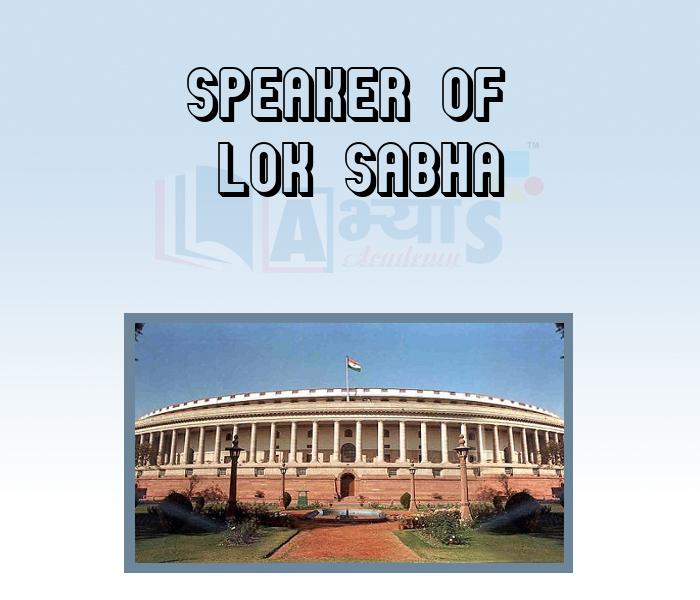Speaker of Lok Sabha










Speaker of Lok Sabha
Functions & Powers of Lok Sabha Speaker
(1) Accepting, regularizing and declaring the question of the member against the rules of the House.
(2) To vote on various bills and proposals and declare the result and right to vote decisively in case of equality of votes (Article 100(i)).
(3) It is the duty of the Speaker to adjourn the House in the absence of quorum.
(4) If there is a difference of opinion regarding a bill between the two houses, a joint Session of the two houses may be called by the President. The joint sitting is chaired by the Speaker of the Lok Sabha.
Which of the following are correct : (a) It is the duty of the Speaker to adjourn the House in the absence of quorum. (b) Article 120 of the Constitution provides for a joint session of Parliament. (c) A Rajya Sabha-certified Money Bill whether it is a money bill or not. | |||
| Right Option : A | |||
| View Explanation | |||
Lok Sabha Speaker can be removed from office before the end of his term __________________ | |||
| Right Option : B | |||
| View Explanation | |||
Speaker appoints the __________________ of all parliamentary committees of the Lok Sabha. | |||
| Right Option : A | |||
| View Explanation | |||
Students / Parents Reviews [10]
It was good as the experience because as we had come here we had been improved in a such envirnment created here.Extra is taught which is beneficial for future.

Eshan Arora
8thIt has a great methodology. Students here can get analysis to their test quickly.We can learn easily through PPTs and the testing methods are good. We know that where we have to practice

Barkha Arora
10thAbhyas is a complete education Institute. Here extreme care is taken by teacher with the help of regular exam. Extra classes also conducted by the institute, if the student is weak.

Om Umang
10thI have spent a wonderful time in Abhyas academy. It has made my reasoning more apt, English more stronger and Maths an interesting subject for me. It has given me a habbit of self studying

Yatharthi Sharma
10thMy experience was very good with Abhyas academy. I am studying here from 6th class and I am satisfied by its results in my life. I improved a lot here ahead of school syllabus.

Ayan Ghosh
8thIt was a good experience with Abhyas Academy. I even faced problems in starting but slowly and steadily overcomed. Especially reasoning classes helped me a lot.

Cheshta
10thA marvelous experience with Abhyas. I am glad to share that my ward has achieved more than enough at the Ambala ABHYAS centre. Years have passed on and more and more he has gained. May the centre flourish and develop day by day by the grace of God.

Archit Segal
7thOne of the best institutes to develope a child interest in studies.Provides SST and English knowledge also unlike other institutes. Teachers are co operative and friendly online tests andPPT develope practical knowledge also.

Aman Kumar Shrivastava
10thMy experience with Abhyas academy is very good. I did not think that my every subject coming here will be so strong. The main thing is that the online tests had made me learn here more things.

Hiya Gupta
8thAbhyas Methodology is very good. It is based on according to student and each child manages accordingly to its properly. Methodology has improved the abilities of students to shine them in future.
